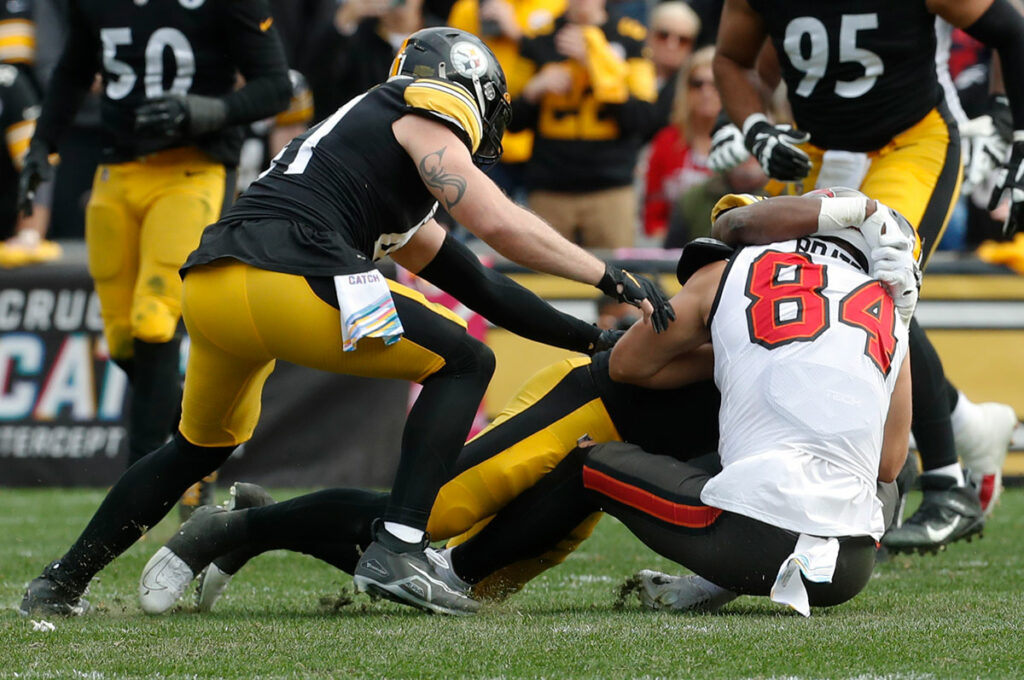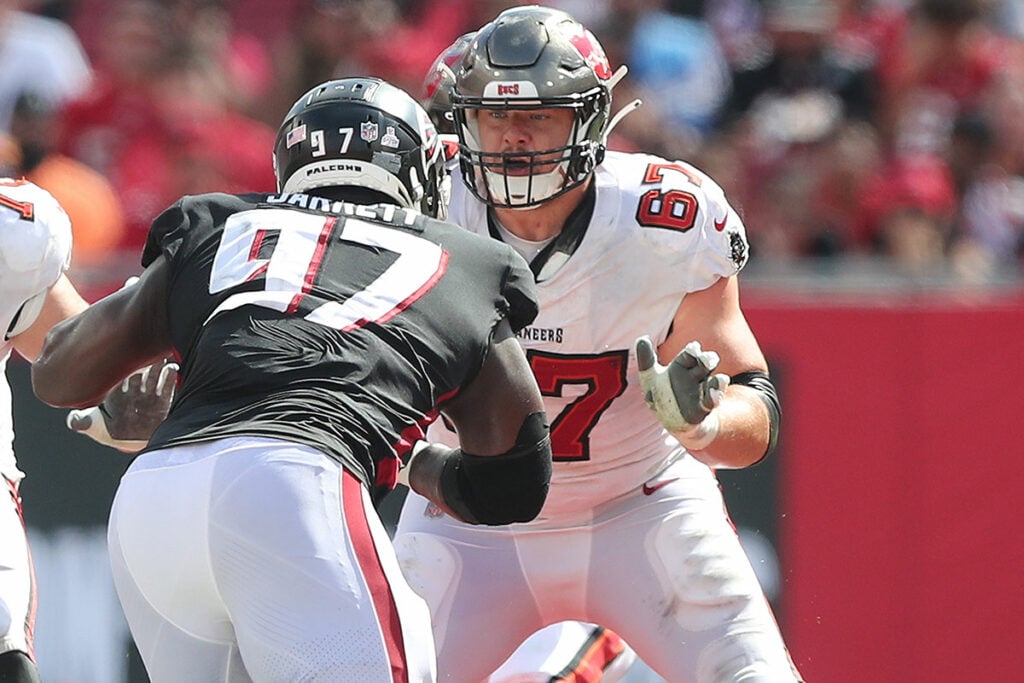The definition of insanity is…doing the same thing over and over again while expecting different results. So, by that definition, maybe this Bucs coaching staff is insane.
Don’t believe me? While offensive coordinator Byron Leftwich strives for balance, his offense has been anything but. And much of that can be traced back to his first-down play-calling.
Let me establish my premise. We can start with macro trends. NFL quarterbacks have attempted 6,370 passes this year. They have generated 44,821 yards on those attempts. That averages out to 7.0 yards per attempt.
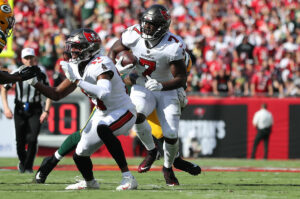
Bucs RB Leonard Fournette – Photo by: Cliff Welch/PR
Add in sacks and you have 7,129 drop backs netting approximately 41,800 yards, or 5.9 yards per drop back. There are exactly two running backs in the NFL that currently average 5.9 yards per carry or more. Neither one of them play for the Bucs.
Now let’s look at things from a more local point of view. Coming into the contest in Pittsburgh here are the numbers on the Bucs offense. Overall, the team has generated 1,410 yards on 215 drop backs while giving up nine sacks in the passing game. This comes out to around 6.15 yards per play through the air.
Meanwhile on the ground the Bucs had 106 carries for 330 yards, or 3.11 yards per play. But what about first down? Maybe there was some magical swing that happened on this opening down that made the idea of balance more understandable.
Well, that’s not exactly the case. The idea of expected points per play is one that is difficult to convey. But the overall idea is that based on down, distance, field position and time remaining in the game, there have been enough plays over the course of the history the NFL to measure how many expected points are added with each play depending on its result.
With that in mind I ran the numbers for the first five weeks of the regular season on EPA/play when passing vs. running. The results may blow your mind. Each time the Bucs passed the ball they had a positive 0.116 EPA/play. And when they ran their EPA/play was negative 0.302. That’s an insane difference!
Bucs’ First-Down Play-Calling Is Consistently Hurting Them
What about just on first downs? The disparity is almost identical, with passing plays rising to 0.225 EPA/play and running plays rising to -0.187.
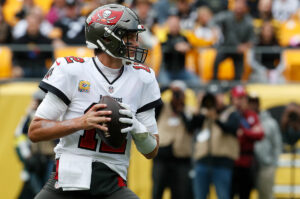
Bucs QB Tom Brady – Photo by: USA Today
But EPA/play is a very abstract measurement, and kind of hard to understand. So, I decided to go a bit more old-school. I charted every first down play the Bucs have run this year. The results dovetail with the EPA/play measurements pretty soundly.
Over 54 first down run plays the Bucs averaged 3.11 yards/play. They were successful (gained at least 50% of the yards needed for a new set of downs or score).
And on their 85 passes? 8.54 yards/play and a success rate of 57.65%. These are stark contrasts.
Now you might say, “Well, Josh 85 passes to 54 runs sounds like Leftwich is leaning pass heavy. Why are you upset?”
That is because this ratio is heavily skewed due to multiple second halves where the Bucs were down and had to pass to catch up. When looking at pass rate in neutral situations (early downs in close games not in two-minute situations) was around just 55%.
There is literally no metric or explanation that is in favor of an early down balanced attack. As a matter of fact, the best way to achieve balance throughout the game would be to pass early and often to get into second- and third-and-shorts, where runs that generate less yards per play are more likely to still be successful.
Additionally, an offense that passes early is more likely to be more successful and therefore generate more points that would be more likely to create a lead where the offense can then run later to even out the ratio overall.
Bucs Offense Went Backwards In Pittsburgh
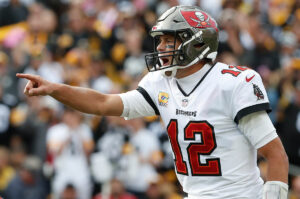
Bucs QB Tom Brady – Photo by: USA Today
That leads us to Pittsburgh. Did Leftwich take any of this information and say: “Let me put my offense in the best possible position to succeed. Let’s pass 70-80% of the time on first down. Let’s create easy second and third downs more efficiently.”
Nope.
That unbalanced approach just does not make sense to Leftwich. On Sunday in Pittsburgh the Bucs ran the ball 16 times and passed 14 times. The runs generated 3.06 yards/play while the passes created 4.3 yards/play. On the passing game’s second worst first-down game of the season, it still produced 40% more yards/play than the running game.
This cannot be sustained. The running game is not going to miraculously start keeping pace with the passing game on a per/play basis. Every time Leftwich decides to call a run play on first day he is willingly giving away on average five yards. How much longer can the Bucs afford to allow that to happen? Only time will tell.
Josh Queipo joined the Pewter Report team in 2022, specializing in salary cap analysis and film study. In addition to his official role with the website and podcast, he has an unofficial role as the Pewter Report team’s beaming light of positivity and jokes. A staunch proponent of the forward pass, he is a father to two amazing children and loves sushi, brisket, steak and bacon, though the order changes depending on the day. He graduated from the University of South Florida in 2008 with a degree in finance.


